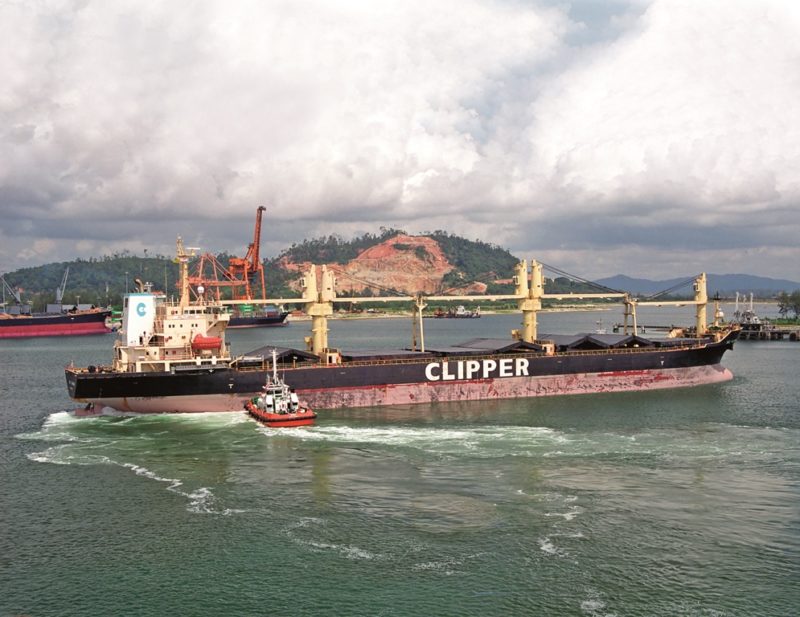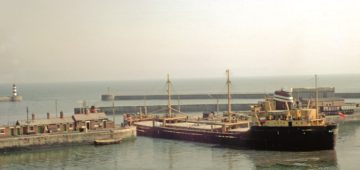
Malaysia has 25 ports in Peninsular Malaysia, 17 in Sabah, and 13 in Sarawak, but only four of these are major ports and all are located in Peninsular Malaysia, and handled over 20 million tonnes of cargo using only 75% of their total handling capacity and only 47.5% of their container capacity in 2014. These four ports are Penang, Port Klang, Johore and Kuantan. I have described both Penang and Port Klang already in Ports of Call in this magazine. The Port of Johore is located at the city of Pasir Gudang in Southern Malaysia opposite the north coast of Singapore Island and was established in 1977. It has the largest Palm Oil Terminal in the world with also multi-purpose, dry bulk, breakbulk and container berths. In 2019, the Port of Johore for the first time since container operations began in 1993 had a throughput of one million TEU of containers, up 10.5% over the previous year.
HISTORY AND CULTURE OF KUANTAN
The Port of Kuantan is a main shipping gateway from the East Coast Economic Region (ECER) of Malaysia to markets in the South East Asean, Asia Pacific and Far East areas. The port offers the shortest, quickest and most direct route between Malaysia and other ports in China, Japan and Taiwan. The city of Kuantan lies 25 kilometres to the south of the port and was officially declared a city in 2020. It is the administrative centre of the State of Pahang and is located at the mouth of the Kuantan river. It is the largest city on the East Coast of Peninsular Malaysia. The Sultan of Pahang officially relocated the administrative centre from Kuala Lipis to Kuantan on 27th August 1955.

The climate of Kuantan is officially ‘Tropical Rainforest’ under the Koppen climate classification. The area experiences two seasons per year, the ‘Dry and Hot’ season and the ‘Rainy’ season. This is a relative definition as the area does not have a truly dry season, but occurs when seasonal south west winds blow in from Sumatra towards the West Coast of Peninsular Malaysia but are blocked by the Titiwangsa Mountain Range. The temperature often reaches 40 degrees Celsius in the ‘Dry and Hot’ season. The ‘Rainy’ season usually occurs between October and March when north east winds bring rain and much cloud to Kuantan. The rainfall is high and flooding of areas can occur near to the Kuantan river and on the road to Sungai Lembing, a former tin mining area. Air pollution with sand and dust blowing in from Sumatra and the West Coast of Peninsular Malaysia can also occur.
The history of Kuantan follows the Chinese empires of Chih-Tu and Pheng-Kheng until it was taken over by the Siamese during the 12th century. A Chinese naval squadron under Admiral Zheng He sailed from China on 8th March 1421 and passed Kuantan on their way to their base at Malacca for exploration and discoveries in the Indian and Antarctic Oceans. Five hundred years later on 10th December 1941, a British naval squadron under Admiral Sir Tom Phillips on the battleship flagship Prince of Wales, accompanied by the battlecruiser Repulse and four destroyers, was annihilated by Japanese dive bombers and torpedo bombers and sunk with the loss of 840 British lives as the age of the battleship was rapidly drawing to a close. Four Japanese planes were shot down and many more damaged by British anti-aircraft guns at a cost of 18 Japanese lives. Force Z had the mission to intercept the Japanese invasion fleet that was about to make an amphibious landing in Northern Malaya. The task force had no air cover or support and failed to find and destroy the main invasion fleet, and on their return to Singapore both capital units were quickly sunk. The attack occurred 61 miles due east of the present day Port of Kuantan, and only three days after the surprise attack by aircraft from five Japanese aircraft carriers on Pearl Harbour at Honolulu.
During the 15th century, Kuantan was ruled by the Malacca Empire, but became an area under the control of the Sultan of Pahang in the 1850s. Fishing and agriculture were the main economic activities until the Chinese tin miners and traders arrived in the 1890s to establish the town of Kuantan and nearby tin mining areas of Sungai Lembing and Gambang. Indian settlers then arrived to begin rubber plantations, with the demographic split of the population based on the Department of Statistics Malaysia now as Malay (78.5%), Chinese (17.9%), Indian (3.3%) and others (0.3%). The Pahang State Mosque (Masjid Negeri) is an imposing building with a blue dome and four tall, white minarets set in a beautiful park. A large reclining Buddha can be found in a cave called the Charah Cave in the limestone mountains on the road to Sungai Lembing around twenty miles from Kuantan. The highest peak of Gunung Tapis can be climbed from the Charah Cave. The traditional foods and crafts of batik, handicrafts, dried and salted fish, timber felling and wood carving, and fishing go back many centuries.

Subscribe today to read the full article!
Simply click below to subscribe and not only read the full article instantly, but gain unparalleled access to the specialist magazine for shipping enthusiasts.





Comments
Sorry, comments are closed for this item